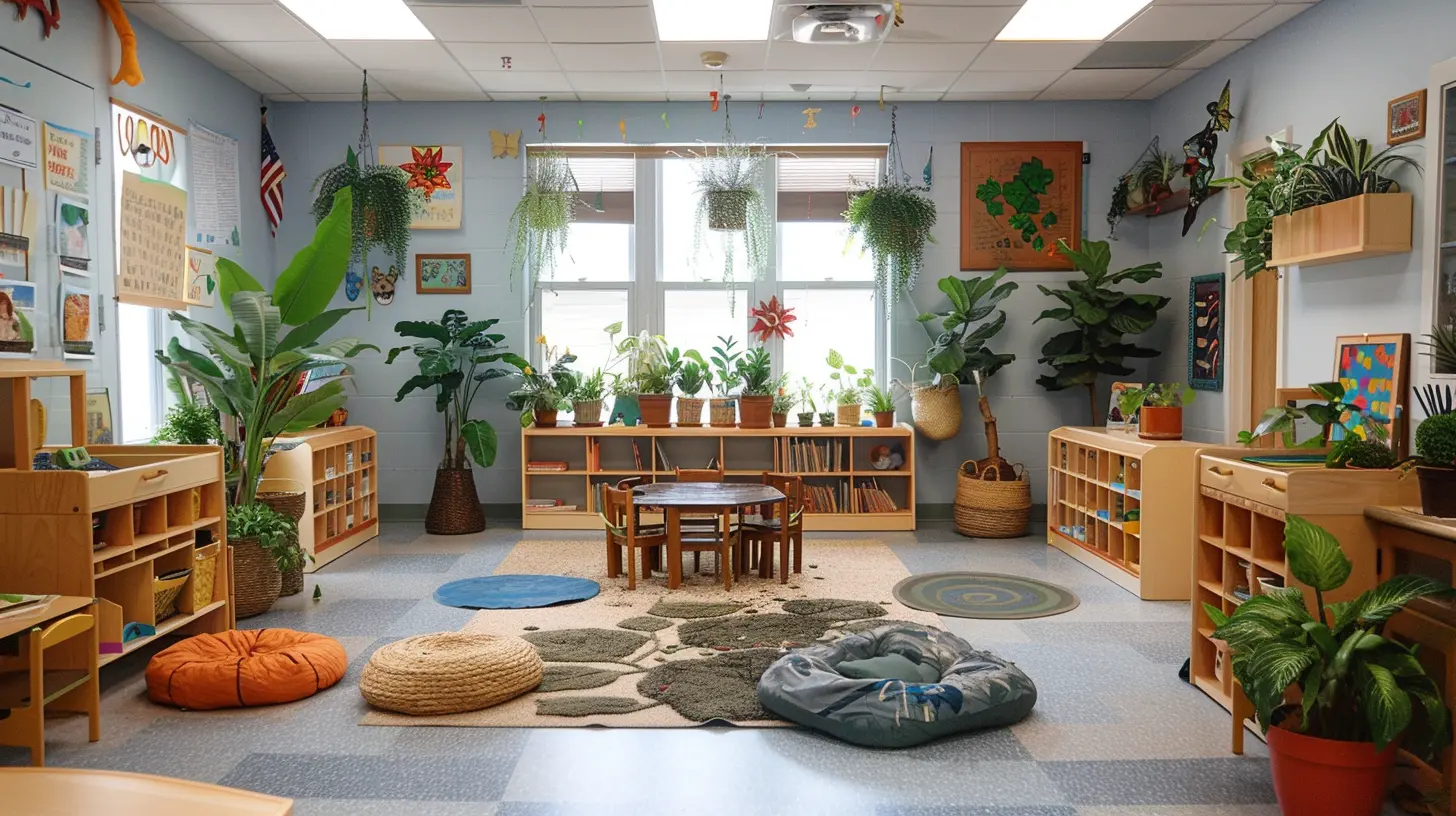How to Create a Reading-Friendly Environment in Your Classroom
23 June 2025
Reading is more than just a subject in school—it's a lifelong skill that shapes how we think, imagine, and connect with the world. But let’s be real: not every student walks into the classroom with a love for reading. Some find it boring, others struggle with it, and many just haven’t found the right book yet. That’s where you come in.
As a teacher, you have the power to change the way students feel about reading. Your classroom can be a place where stories come alive, where students cozy up with books like they’re old friends, and where reading becomes something students want to do—not just something they have to do.
In this article, we’ll dig deep into how to create a reading-friendly environment in your classroom. Whether you're teaching first graders or high school seniors, there are simple, creative, and effective ways to make your space feel welcoming, inspiring, and, most importantly, fun for budding readers.
Why a Reading-Friendly Environment Matters
Let’s start with the why. Why put effort into creating a reading-friendly space?Think about your favorite cozy spot to read. Maybe it’s your couch with a warm blanket. Or a sunlit corner with a cup of tea. Now imagine trying to read in a noisy, rigid, uncomfortable space. Not exactly ideal, right?
Students are no different. The right environment can make reading feel like a treat instead of a chore. A reading-friendly classroom helps:
- Improve reading comprehension and fluency
- Foster a love of books and storytelling
- Encourage independent learning
- Reduce reading anxiety in struggling students
- Create a positive reading culture among classmates
Bottom line? The vibes in your classroom matter just as much as the reading material itself.
Step 1: Create a Cozy and Inviting Space
Imagine walking into a room filled with harsh fluorescent lights, cold desks, and zero personality. Not exactly inspiring for story time.Now picture a classroom with soft lighting, comfy pillows, colorful posters, and a corner filled with inviting books. See the difference?
Here’s how you can set the mood:
Use Flexible Seating
Not all students focus best sitting upright in a stiff chair. Some kids love reading while lying on the floor with a pillow; others prefer bean bags or stools. Give options. Having flexibility in seating boosts comfort and focus.Lighting is Key
Harsh lighting can be off-putting. If you can, add lamps or fairy lights in your reading area. Natural lighting is even better, so don’t block those windows!Add Touches of Home
Rugs, cushions, even a small bookshelf with plants or posters—these give your classroom a “homey” feel. The goal? Make it feel less like school and more like a reading sanctuary.
Step 2: Build an Accessible and Diverse Classroom Library
Let’s say your favorite bookstore only stocked business textbooks. You’d stop going, right?Students need variety. And they need to see themselves in the pages.
Offer Books at All Levels
Every classroom has readers at different levels. Make sure your library includes:- Picture books for visual learners
- Chapter books for advanced readers
- Graphic novels for reluctant readers
- Audiobooks or read-alongs for struggling readers
No student should feel like reading isn’t for them.
Reflect Their Interests
Find out what your students love. Superheroes? Fantasy? Animals? Sports? Get books that match those interests. The more relevant the content, the more likely they are to dive in.Represent Every Voice
Diversity matters. Stock your shelves with books from different cultures, backgrounds, languages, and perspectives. Every child deserves to read stories where they feel seen—and also learn about others.
Step 3: Make Time for Reading—Every Day
This one’s huge. If we only asked kids to run once a month, they’d never get in shape. Same goes for reading.Establish Daily Reading Time
Set aside 15–30 minutes a day for independent reading. Treat it like sacred time. No interruptions. No tasks. Just students and their books.Read Aloud—Yes, Even for Big Kids
Reading aloud isn’t just for elementary school. Older students love it too. You bring the characters to life, model fluency, and introduce new genres. Plus, it creates a shared experience that builds community.Create Reading Rituals
Light a (battery-powered) candle. Play quiet background music. Use a soft chime to signal “reading time.” Small routines can turn reading into something students look forward to.Step 4: Use Displays and Visuals to Spark Interest
A blank wall isn’t inspiring. Use your classroom walls to shout, “Books are awesome!”Showcase Book Recommendations
Create a bulletin board titled “Books We Love” where students can post short reviews or quotes from their favorite reads. Peer recommendations are powerful.Feature a “Book of the Week”
Highlight a different title each week. Place it in a special stand or decorate a corner around it. Add some mystery—leave little clues or teaser quotes. Make students want to pick it up.Track Reading Goals (Without Pressure)
Use visual trackers like reading logs, sticker charts, or graphs—but make sure it’s fun, not competitive. Celebrate progress. Even a student reading one book a month deserves recognition.Step 5: Encourage Book Talk and Reading Communities
Books are better when shared. A reading-friendly classroom isn’t just about private reading—it’s about community, too.Host Book Chats
Once a week, let students share what they’re reading with a partner or small group. No pressure, no grades, just conversation. Not all students love to talk, and that’s OK—but hearing peers get excited about stories can be contagious.Start a Classroom Book Club
Pick a short, accessible book and read it together. Discuss characters, themes, or even cast movie versions. Make it fun and low-stakes.Invite Book Talks From Teachers and Guests
Show your own love for reading. Talk about books that shaped you. Invite fellow teachers or parents to share their favorites. Role modeling goes a long way.Step 6: Support Struggling Readers With Compassion
Not every child finds reading easy. And for some, reading time brings stress instead of joy. Your job? Be their safe haven.Avoid Public Reading Pressure
Don’t force students to read aloud if they’re not ready. Instead, give them opportunities to practice in small groups or one-on-one. Protect their confidence, always.Use Tools and Technology
Audiobooks, text-to-speech apps, colored overlays—these tools help level the playing field without stigma. Offer them freely and naturally.Celebrate Effort, Not Just Achievement
When a struggling reader finishes a book—any book—that’s a win. Celebrate it. Focus on growth, not speed or level.Step 7: Keep the Momentum Going Year-Round
Creating a reading-friendly classroom isn’t a one-and-done deal. It’s a culture you build every day.Rotate Books Often
Change up your library shelves every month. Feature holiday themes, current events, or student picks. Keep it fresh.Get Student Input
Ask students what’s working and what’s not. Let them suggest books for the library. Give them ownership—it makes a difference.Celebrate Reading Milestones
Hold “reading parties,” complete with snacks and silly prizes. Hand out quirky certificates ("Best Bookworm Award", "Graphic Novel Guru"). Make it fun. Reading should be celebrated.Final Thoughts
Creating a reading-friendly environment in your classroom isn’t about expensive furniture or having 1,000 books. It’s about heart. It’s about respect for each student’s reading journey.It’s about saying, through your words and your space, “Reading matters here. You matter here.”
So go ahead. Turn your classroom into a cozy nook of curiosity, compassion, and connection. Let books be the bridge that brings your students closer to new worlds—and to each other.
Because when students fall in love with reading? That’s when lifelong learning really begins.
all images in this post were generated using AI tools
Category:
Reading ComprehensionAuthor:

Monica O`Neal
Discussion
rate this article
2 comments
Caelum McClain
Creating a cozy space inspires students to embrace reading.
September 12, 2025 at 3:56 AM

Monica O`Neal
Absolutely! A cozy space can significantly enhance comfort and engagement, making reading a more inviting experience for students.
Uma Thompson
Transform your classroom into a reading wonderland—where books are the treasure, and every student is a treasure hunter!
June 23, 2025 at 4:12 AM

Monica O`Neal
Thank you! Creating a reading wonderland truly transforms students into eager explorers of knowledge and imagination. Happy teaching!


